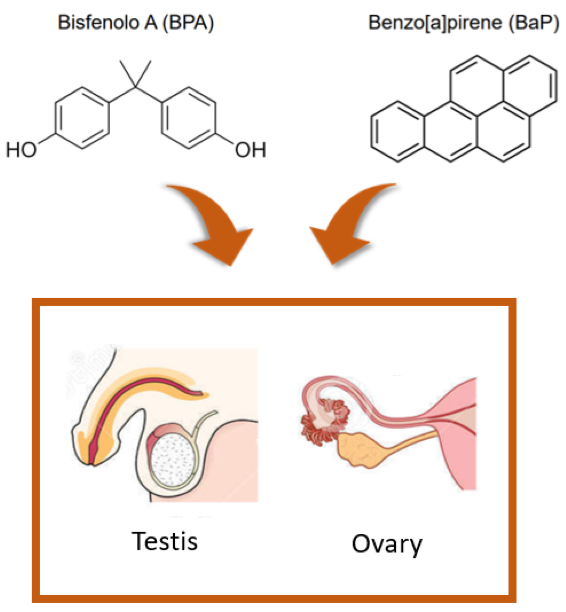ENDOCRINE DISRUPTORS AND REPRODUCTIVE DYSFUNCTIONS
ENDOCRINE DISRUPTORS AND REPRODUCTIVE DYSFUNCTIONS
The endocrine disruptors are exogenous chemical substances, which can alter the proper functioning of the endocrine system. Among them, Bisphenol A (BPA) and benzo[a]pyrene (BaP) are extremely widespread as environmental pollutants since they mainly come from plastics of food and drink packaging, cigarette smoke, vehicle exhaust gases. Thus, we are commonly exposed to those molecules through the air, the particles, the water and the food. Despite the evidence of their involvement in alterations of endocrine events and spermatogenesis both in males and females, the real impact of these substances on human fertility and their mechanisms of action are still unclear.
BPA and BaP are known to have an estrogenic activity, acting both on the nuclear and the membrane estrogen receptors, suggesting their capability to interfere on gonadotropins action in regulating folliculogenesis and spermatogenesis. In vitro experiments performed both on human granulosa luteal cells (hGLC) and murine Leydig tumor cells 1 (mLTC-1) allow to highlight which steps of the LH- and FSH- induced signals are affected by the action of endocrine disruptors. Those findings can be crucial to understand the molecular action of BPA and BaP on human gonadal cells.


